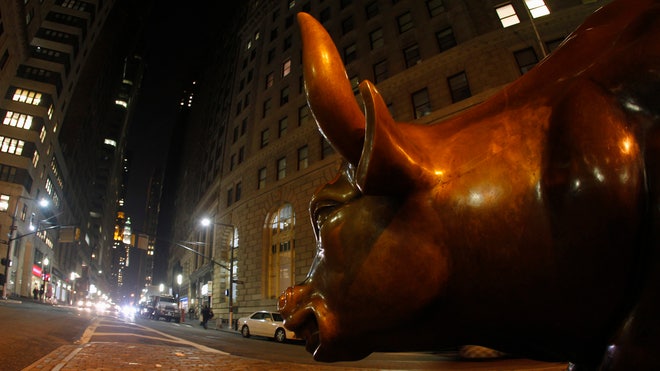Will the Bull Market Survive to See its 5th Birthd
Post# of 63898

Will the Bull Market Survive to See its 5th Birthday?

The least respected bull market of all time celebrated its fourth birthday this month by racking up eight consecutive days of record closes for the Dow Industrials.
But investors are now wondering: Will this bull market survive to see its fifth birthday?
Statistics compiled by S&P Capital IQ reveal that five of the six bull markets that made it to year four have survived at least another year, generating an average return of 21% in their fifth year.
That means if this bull market follows historical trends despite looming obstacles, the S&P 500 could surge to 1877 by March 2014.
“This colic bull market was given little hope of celebrating its third birthday, let alone begin its fifth year of life,” Sam Stovall, chief investment strategist at Capital IQ, wrote in a note to clients this week.
Since fears of an economic depression faded in March 2009, the S&P 500 has more than doubled in value, skyrocketing 135%.
Wild Ride Back to Historic Highs
Fueled by signs the Great Recession was ending and supported by unprecedented help from the Federal Reserve, the benchmark index surged 68.6% during its inaugural year alone, doubling the first year average of 38% for all bull markets since World War II.
The outsized first year returns can likely be attributed to enormous relief that the financial system hadn’t completely collapsed following the Lehman Brothers implosion.
After the euphoric start to the bull market, which is typically defined as a 20% advance off a bear-market low that lasts at least six months, Wall Street generated returns that were much more in line with historic norms.
The S&P 500 gained 15.7% in the bull market’s second year, 3.9% in the third year and then 13.2% in the fourth year, compared with averages of 13%, 5% and 13%, respectively, according to Capital IQ.
What Will Year Five Bring?
Since World War II, five of the six bull markets that made it to their fourth birthday survived another year: the bull runs that began in 1949, 1974, 1982, 1990 and 2002.
By that age, Stovall said the S&P 500 “turned on the after-burners,” averaging a 21% leap in prices in that fifth year. The strongest fifth-year performance occurred between August 1986 and August 1987 when the index surged 36.6% amid former President Reagan’s second term.
If the current bull market can overcome obstacles like slow growth and fiscal uncertainty, a 21% rally from Friday’s close at 1551 would propel the S&P 500 to 1877. At those levels, the broad index would be sitting 19.9% above all-time closing highs and a whopping 181.8% above its bear market low of 666.
Stovall notes that the fifth year of a bull run tends to be especially profitable for investors who sink their cash into these economically-sensitive sectors: energy, IT, materials and industrials, which have averaged very healthy returns of 45%, 33.8%, 33.5% and 25.6%, respectively.
On the other hand, the following sectors, some of which are more defensive in nature, have underperformed during the fifth year: health care, consumer staples, consumer discretionary, financials, telecom services and utilities. But all of those sectors still sported double-digit returns, trailed by a 14.4% gain for the utilities group.
Geopolitical, Fed Risks Eyed
None of this guarantees a fifth year of gains for Wall Street.
“The global growth trajectory remains low, albeit increasing. Headwinds remain, including dysfunctional governments, increasing levels of debt, amid a host of geo-political territorial tensions,” Stovall said.
What could derail the current bull market? Plenty.
“If we are looking for trouble, it isn’t hard to find lots of worrisome headlines about all sorts of ‘event risks,’” Ed Yardeni, president of investment advisory Yardeni Research, told clients on Thursday.
Yardeni, who remains bullish on the market, highlighted geopolitical risks stemming from Iran, North Korea and China, whose “new leader seems to be siding with his generals who dream of a Chinese military mightier than America’s.”
Year Six?
At the same time, the political paralysis gripping Washington could prompt a policy blunder, such as fumbled negotiations to raise the debt ceiling.
The bull run could also be thrown off course by a shift from the Fed, which is showing more signs of concern about unintended side effects from its incredibly easy monetary policies.
While Capital IQ believes the S&P 500 “will likely celebrate its fifth birthday in 2014,” Stovall said, “we believe the S&P 500 is currently overextended and will likely slip into a pullback or correction within the next few months.”
In case you’re already looking ahead to 2015, Capital IQ says that out of the five bull markets that persisted through the fifth year, all but one went on to celebrate a sixth anniversary, averaging a stellar return of 26%.
 (0)
(0) (0)
(0)